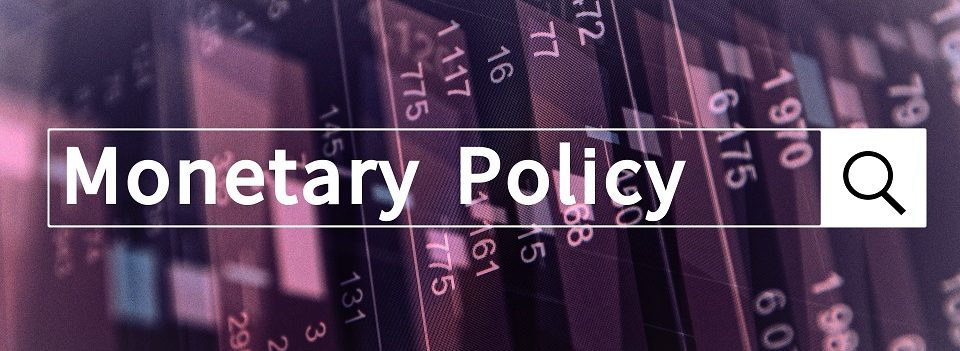Status Quo on Rates
Monetary Policy Committee of the RBI has left the base rates unchanged in the announcement today. This is on
expected lines as the RBI was expected to maintain status quo and stress more on the accommodative stance, liquidity enhancement measures and restructuring of the loan portfolios. The cumulative reduction of policy rates by 250bps and its effect on the market lending rates, coupled with the uncertainties with regards to the outlook of inflation were the key factors guiding the policy decision. Even as the growth concerns have been given due consideration over the recent past in MPC meetings, the primary mandate of the MPC is to achieve the medium-term target for CPI inflation of 4% within a band of +/- 2%.
Growth & Inflation
The outlook for growth and inflation continues to be uncertain, and contraction in GDP growth is expected for H1 of
2020-21, and for the whole year as well. Inflationary pressures are expected to remain elevated in Q2 and it may
moderate in Q3. Spike in food prices and cost-push inflation, may have continued influence over the price level. The
beneficial effects of a good monsoon on the prices of fruits and vegetables may support lower prices, but higher oil
prices could put some pressure.
The inflation numbers for the past three months have been inadequate owing to the lockdown scenario, making it
unreasonable to arrive at future projections based on this data. The food prices are expected to ease going ahead on
the back of a robust rabi harvest, but the floods in eastern India and high taxes on petroleum products may exert
upside pressure on headline inflation numbers.
From a growth perspective, the outlook is heavily contingent on the duration of the pandemic, risks of a second wave of infections and the discovery of a vaccine.
Further rate Action
There is further room for rate cut. But the RBI will wait and watch for a “durable reduction” in inflation for further rate action. This amounts to saying that only if there is sustained fall in inflation especially food prices RBI may consider further rate cuts. This does not rule out further rate cuts but makes it linked to inflation performance.
Impact of Policy
The RBI policy has been effective in the desired direction in the last one year and especially so after the pandemic
started. The transmission of the benefits of a rate cut has been possible only due to the efficient and easy liquidity
management. The overall financial conditions were kept more or less at normal levels due to the pro-active RBI policy. The OMOs reduces the cost of funds across the board. Borrowing costs through CPs and CDs were at low single-digit levels after more than two decades. The three-month CP rate for NBFCs was 3.80%, whereas for non-NBFCs it was 3.40% recently, and this indicates that the differential cost of funds also has been bridged to a large extent.
The NBFC space is better now due to the liquidity action. The transmission of rate cuts that has been attained so far is to the tune of 162 bps from Feb 2019 to June 2020, that is the weighted average lending rates of banks for fresh loans, came down to that extent. Of this 91bps transmission happened during the period March to June 2020. This points towards greater effectiveness of the policy initiatives in recent times.
Other Measures
The RBI may have resorted to status quo this time around, but in line with its accommodative stance, it announced
other measures to soften the impact of the pandemic on the economy. As noted by MPC statement, the additional
measures are announced to (i) enhance liquidity support for financial markets and other stakeholders; (ii) further ease financial stress caused by COVID-19 disruptions while strengthening credit discipline; (iii) improve the flow of credit; (iv) deepen digital payment systems; (v) augment customer safety in cheque payments, and (vi) facilitate innovations across the financial sector by leveraging on technology.
RBI has announced further additional liquidity support to NHB and NABARD to the tune of Rs.10,000 Crs, 50% each would go to each institution. The pandemic related resolution of stressed assets also has been announced covering all loans including MSMEs and a resolution plan could be prepared. But this would apply to accounts which have been standard as of March 1, 2020. The details of how this would work will be known in due course. To improve the accessibility of households to credit, the RBI has enhanced the loan to value (LTV) ratio for gold loans from 75% to 90%.
Perspectives
What was needed from the RBI this time around was a reaffirmation of the accommodative policy, which the RBI has
done clearly. The liquidity management is also being done pro-actively which would help the short-term rates to
remain stable to lower. The policy takes cognizance of the economic realities around growth and inflation and has
adopted a pragmatic approach to the resolution of important issues. The RBI categorically mentioning in the policy
statement that “space for further monetary policy action in support of this stance is available” bodes well for fixed-income investments. The investment recommendations given in relation to asset classes and portfolios remain
unchanged.



